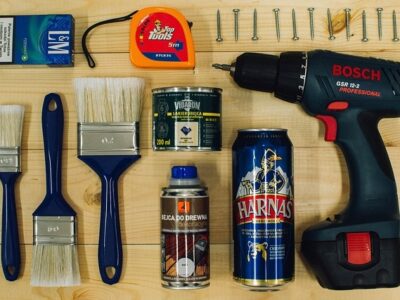When it comes to your plumbing system, what you typically see in your home, such as sinks, toilets, faucets, and fixtures, represents just a fraction of the complex network that ensures your access to clean water and sanitation. Beyond these visible elements lies an extensive concealed system comprising supply pipes and other essential plumbing components. Today, we’ll take a closer look at the plumbing rough-in process to shed light on what happens behind the scenes.
Achieving Seamless Integration
Throughout the construction process, a licensed plumber from the City of Toronto is enlisted to conduct the plumbing rough-in. The initial phase of this Toronto plumber installation involves setting up the waste system. Given the substantial size of these pipes, it is more practical to lay them first and then accommodate smaller supply pipes around them. The pipe ends are securely capped to facilitate pressure testing by the installation plumber, ensuring a leak-free system.
Typically, plumbing rough in Toronto is completed before the foundation slab is poured for your new home, positioning it for inspection to confirm compliance with city codes.
This represents just one facet of the multifaceted role that Toronto plumbers are genuinely passionate about.
Unveiling the Plumbing Network
Plumbers work with an intricate web of supply pipes, wastewater pipes, and fixtures that form the backbone of your plumbing system, often overlooked until issues arise.
Understanding the Water Supply
Plumbers initiate their work with the plumbing system right from the service line, which connects your home to the municipal water source. Within this system, there’s a primary cold-water pipe known as the trunk line. This trunk line branches out, supplying water to both the water heater and various fixtures throughout your house. In parallel, a hot-water trunk line runs alongside, mirroring the layout of the cold-water trunk line, ensuring a continuous supply of hot water when needed. As you move farther from the main supply line, the pipes gradually become smaller and narrower, adapting to the specific demands of each area in your home.
Water supply pipes come in a variety of materials, with older homes often featuring iron or copper pipes. However, many licensed plumbers in Toronto now recommend the use of plastic pipes. While copper pipes offer reasonable durability, plastic pipes are highly flexible, easy to install, and cost-effective. According to Toronto plumbers, plastic’s flexibility allows it to handle freezing conditions more effectively, reducing the likelihood of burst pipes.
The expertise of a plumber during installation is crucial when building or expanding your home. A master plumber ensures secure connections between pipes, with copper joints expertly soldered and plastic pipes joined using solvent cement.
Understanding Waste Pipes
Waste systems rely on gravity, which is why all waste pipes must be sloped downward and away from fixtures. Ideally, they should have a minimum slope of 1/4 inch per 1 inch of horizontal distance leading towards the septic tank or sewer.
Ventilation is a crucial aspect of any waste system, typically accomplished by an upward extending pipe that protrudes through the roof. This vent serves a vital role in facilitating the smooth flow of waste, water, and septic gases. Without this ventilation, waste drainage would likely encounter significant hindrances.
Every plumbing fixture features a U-shaped trap that remains consistently filled with water. This trap serves as a vital barrier, preventing the ascent of sewer gases through the plumbing pipes.
Fixture Selection
When it comes to choosing visible plumbing fixtures, your plumber or designer will base their selections on building codes and your specific requirements.
The Importance of Plumbing Rough-In
The plumbing rough-in phase is a critical foundation for the functionality of your plumbing system. It’s the stage where meticulous planning and precise installation set the stage for years of reliable service. Choosing the right materials, ensuring proper pipe layouts, and adhering to stringent codes and regulations are all part of the process. In Toronto, plumbing rough-in is not just a behind-the-scenes task; it’s the backbone that supports the convenience and comfort of your daily life. So, while you may not often think about the hidden intricacies of your plumbing, rest assured that a well-executed plumbing rough-in is essential to your home’s overall plumbing performance and your peace of mind.




















